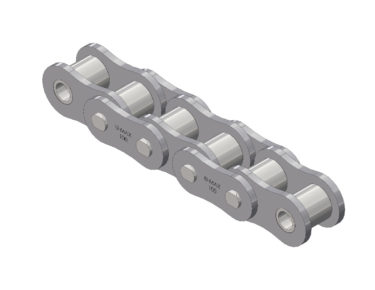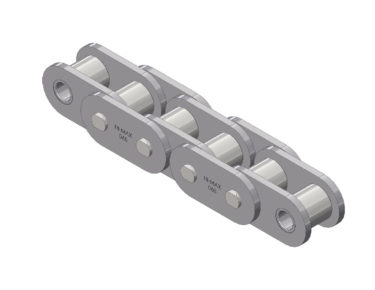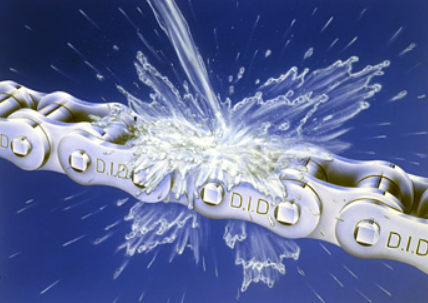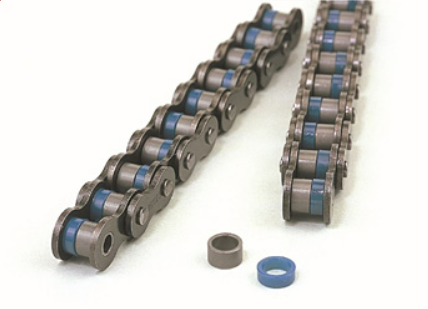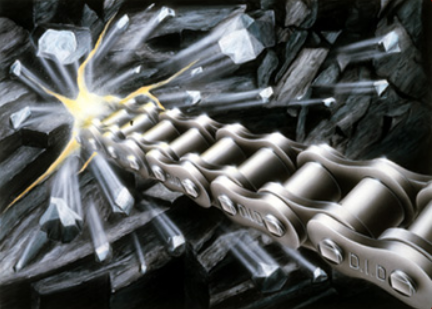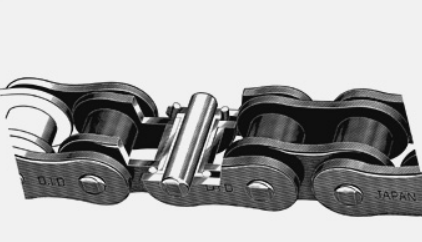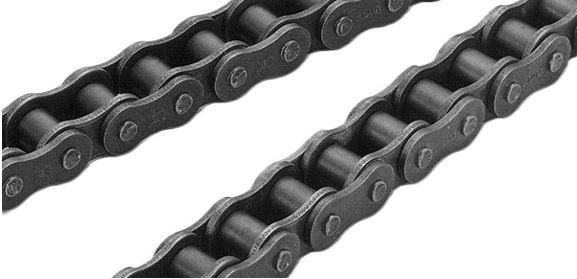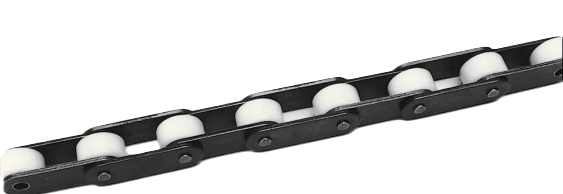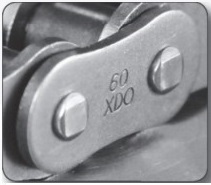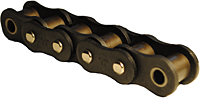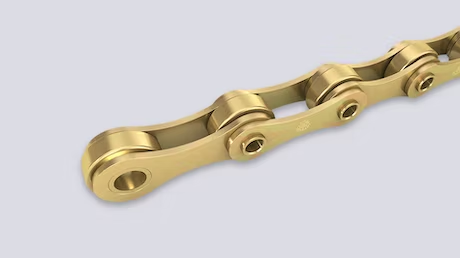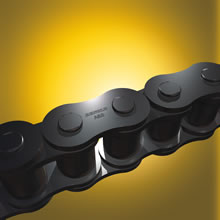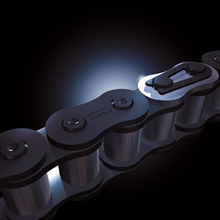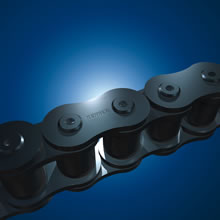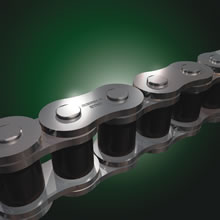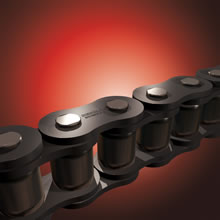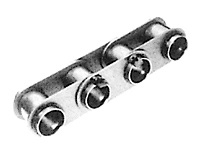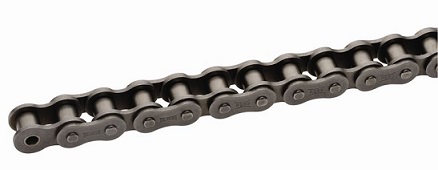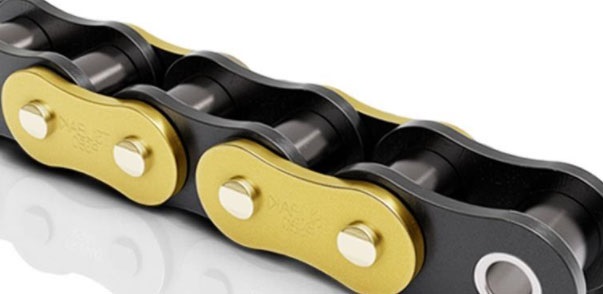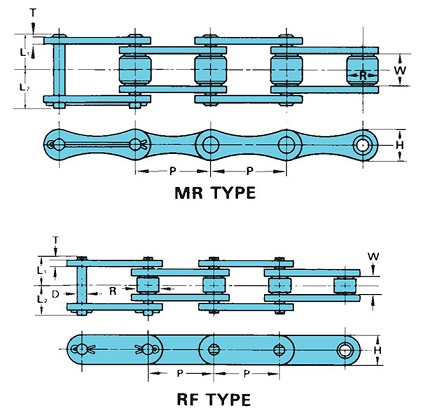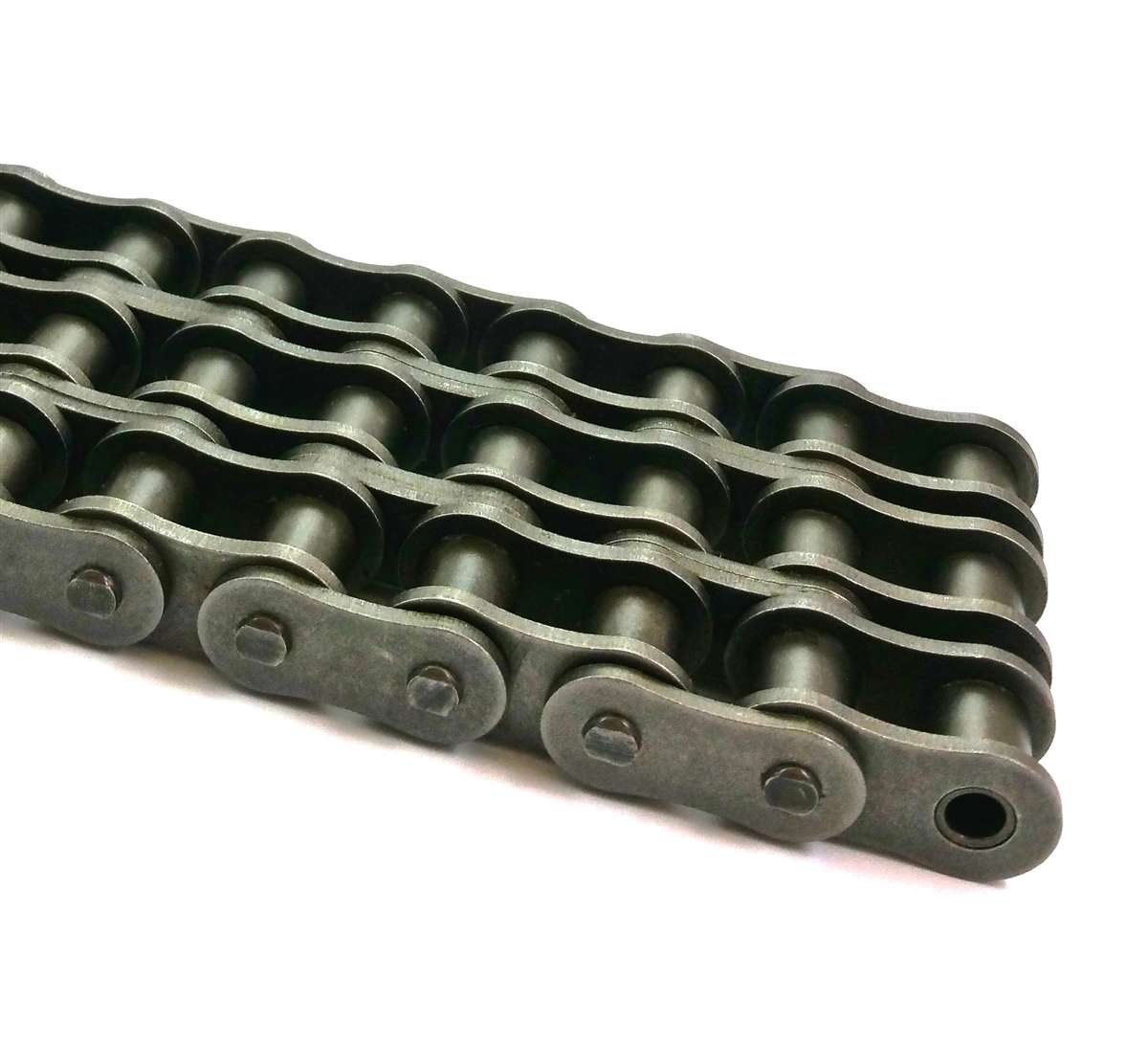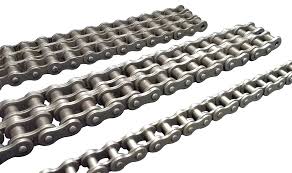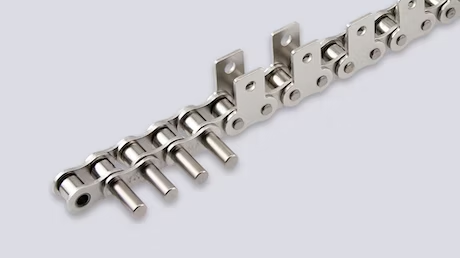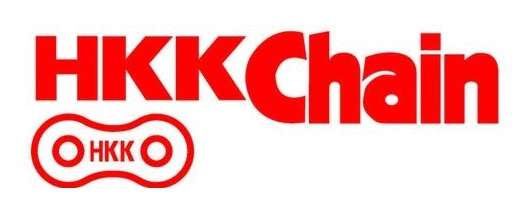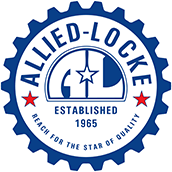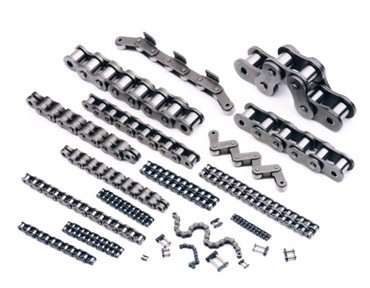
Roller Chains
Roller Chains are constructed like a typical chain link structure, a series of cylindrical rollers connected by links. The main 5 individual components used to make roller chains are pins, bushings, rollers, inner plates, and outer plates. Each piece is utilized to produce subassemblies, which create the final product.
They can be used in a wide range of applications including Power Transmission (industrial conveyors, machine tools, printing presses, and agricultural equipment), Material Handling (forklifts, hoists, cranes), Conveyor Systems (mining, packaging, food processing, manufacturing), Agricultural Equipment (combine harvesters, tractors, grain augers), Industrial Machinery (packaging equipment, textile machinery, woodworking machinery), Robotics and more.
We offer a wide selection of Roller Chains such as Standard ANSI, Precision, Heavy series, E and HE series, Super and Super Heavy, Double Pitch, Corrosion Resistance, Stainless Steel, Hollow Pin, and more.
If you have any questions write us via live chat (one of our team members will answer your questions), give us a call, or send us a quote request. The HVH team is always ready to help you.
 1(866)577-4040
1(866)577-4040
or
Roller Chains
Manufacturers
Roller chains are a crucial component in many industrial applications as they are used to transmit power and motion between two shafts and are commonly found in machines such as conveyor belts, printing presses, and agricultural equipment. At its most basic level, a roller chain consists of a series of connected links, each of which has two outer plates, two inner plates, and a series of rollers. The rollers are free to rotate within the links, allowing the chain to smoothly transfer power between the two shafts.
We will explore the various types of roller chains, their construction, and the benefits of using them in industrial applications. We will also discuss some common maintenance practices that can help extend the life of a roller chain, as well as some troubleshooting tips to help identify and correct any issues that may arise.
What are Roller Chains and How do They Work
Roller chains are mechanical components that transmit power between two rotating shafts. They consist of a series of cylindrical rollers connected by links, forming a chain that wraps around sprockets to transmit power.
Roller chains work by transferring power from a driver sprocket to a driven sprocket, where the chain's rollers engage with the sprocket's teeth. The engagement between the rollers and the sprocket's teeth provides a positive drive, resulting in power transmission between the two shafts.
Types of Roller Chains:
Standard roller chain: This is the most basic type of roller chain, with simple cylindrical rollers and inner and outer links. It is used in a wide range of applications, from light-duty conveyors to heavy machinery.
Double-pitch roller chain: This type of chain has a longer pitch (the distance between the pins) than standard chains. It is often used in applications that require slower speeds and lighter loads, such as agricultural equipment and printing presses.
Heavy-duty roller chain: As the name suggests, this type of chain is designed for heavy-duty applications, such as mining equipment and construction machinery. It has thicker plates and pins, as well as larger rollers.
Hollow-pin roller chain: This type of chain has hollow pins, which can be used to attach attachments such as hooks, pins, or other components. It is often used in conveyor applications.
Stainless Steel Roller Chain: Stainless steel roller chains are designed for applications where resistance to corrosion is critical. They are commonly used in food processing equipment and other applications that require high hygiene standards.
Construction of Roller Chains
Roller chains are typically made from steel, with rollers and pins made from high-grade steel alloys for strength and durability. The plates that connect the links are often heat-treated to increase their strength and resistance to wear.
The chain's pitch (the distance between the centers of adjacent pins) is critical to its performance, and pitch accuracy is maintained through precision manufacturing techniques. The roller diameter is also important, as it affects the chain's ability to transfer power smoothly between the two shafts.
Benefits of Using Roller Chains
Roller chains offer several benefits over other types of power transmission systems. Some of the key benefits include:
High efficiency: Roller chains can transmit power with minimal energy loss, making them highly efficient.
Versatility: Roller chains are available in a wide range of sizes and configurations, making them suitable for a variety of applications.
Durability: Roller chains are made from high-quality materials and are designed to withstand heavy loads and harsh environments.
Cost-effectiveness: Roller chains are generally less expensive than other power transmission systems, making them a cost-effective solution for many applications.
Maintenance and Troubleshooting
Proper maintenance is essential to ensure the longevity and performance of a roller chain. Some common maintenance practices include:
Regular lubrication: The chain should be lubricated at regular intervals to reduce friction and prevent wear.
Proper tension: The chain should be adjusted to the correct tension to prevent slack, which can cause excessive wear and damage.
Inspection: Roller chains must be inspected regularly for signs of wear, damage, or misalignment. Any issues found during the inspection must be addressed promptly to prevent further damage.
In the event of any issues with the roller chain, some common troubleshooting tips include:
Check the tension: A loose chain can cause excessive wear and damage.
Check the alignment: Misaligned sprockets can cause the chain to wear unevenly and break.
Check for damaged links: Bent or broken links can cause the chain to fail prematurely.
Applications of Roller Chains
Industrial roller chains are used in a wide range of applications across various industries. Some of the common uses of roller chains are:
Conveyor Systems - Roller chains are commonly used in conveyor systems for transporting materials from one point to another. They are used in applications such as manufacturing, packaging, and warehousing.
Agricultural Equipment - Roller chains are used in agricultural equipment such as combine harvesters, tractors, and other farm machinery. They are used to transmit power and motion from the engine to the wheels or other components.
Printing Presses - Roller chains are used in printing presses to transport paper and other materials through the machine.
Mining Equipment - Roller chains are used in mining equipment such as conveyors, draglines, and excavators. They are used to transmit power and motion from the engine to the wheels or other components.
In conclusion, industrial roller chains are an essential component of many industrial machines and equipment. They are available in different types and are designed for specific applications. Proper maintenance practices such as lubrication, tensioning, inspection, and replacement are essential to ensure their reliable operation and long service life. By understanding the types and uses of industrial roller chains, you can select the right chain for your application and ensure its proper maintenance.


